
Ficus religiosa
(MRP Inclusive of all taxes)
- Shipping ₹79 for entire order
- Dispatch in 7 days
- Country of origin: India

(MRP Inclusive of all taxes)
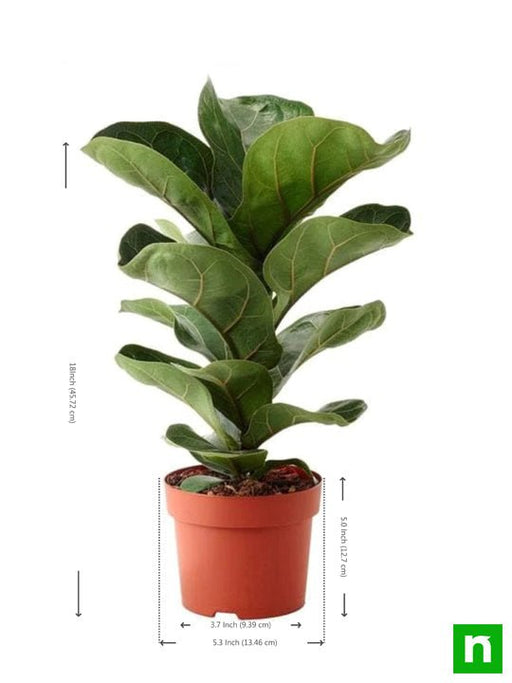
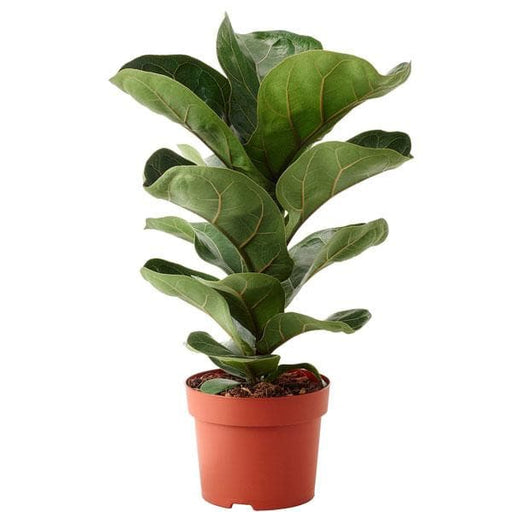 Save 19%
Save 19%
Ficus Lyrata Bambino, Dwarf Fiddle Leaf Fig - Plant The Ficus Lyrata Bambino, commonly known as the Dwarf Fiddle Leaf Fig, is a stunning h...
View full details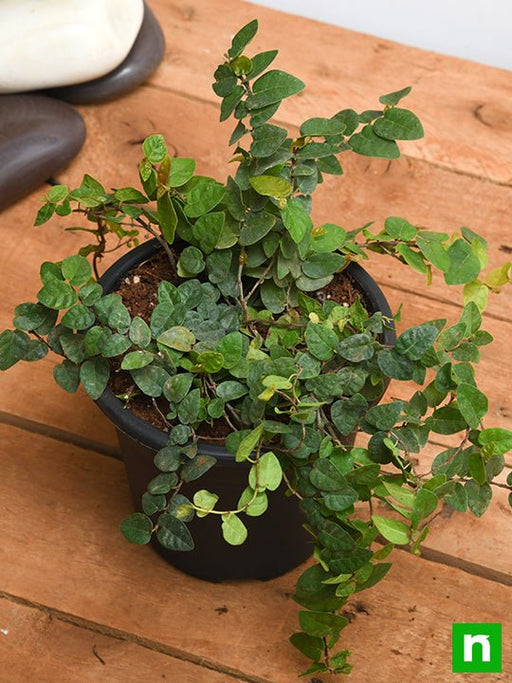
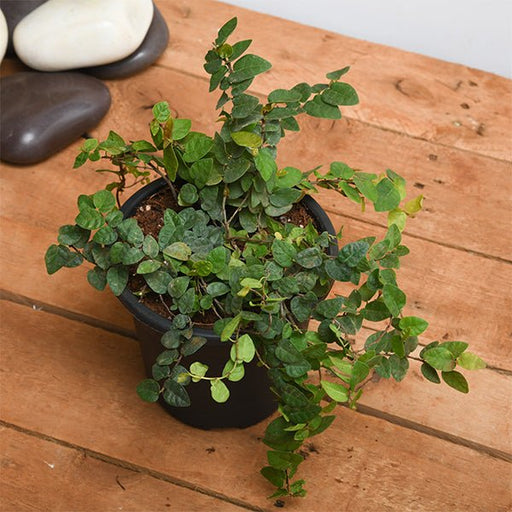 Save 26%
Save 26%
Creeping Fig Plant, Ficus pumila The Creeping Fig, scientifically known as Ficus pumila, is a versatile and resilient climbing plant nativ...
View full details Save 17%
Save 17%
Fig Tree, Anjeer Fruit, Common Fig Fruit - Plant The Fig Tree, scientifically known as *Ficus carica*, is a deciduous tree that produces t...
View full details
 Save up to 29%
Save up to 29%
Rubber Tree, Rubber Plant, Ficus elastica (Small) - Plant The Rubber Tree, scientifically known as Ficus elastica, is a stunning indoor plant that...
View full details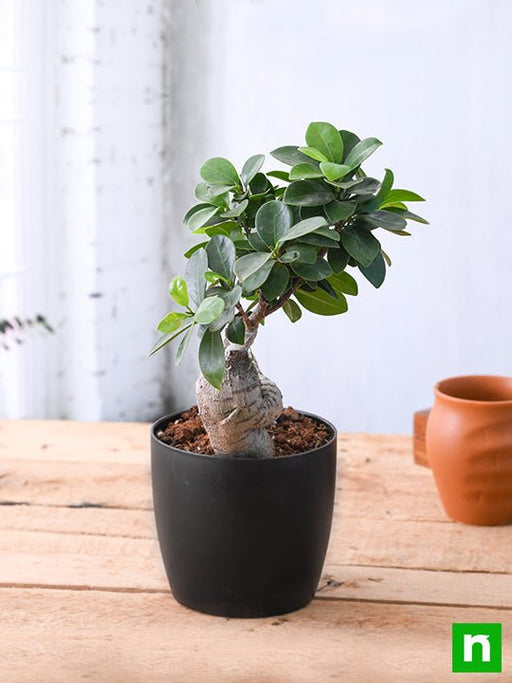
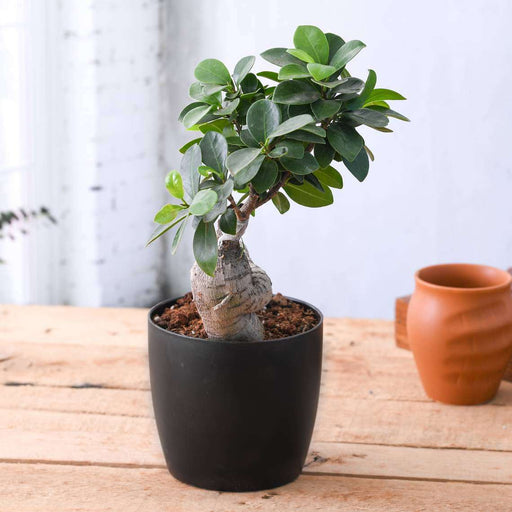 Save 16%
Save 16%
Ficus Bonsai - Plant The Ficus Bonsai is a captivating miniature tree that brings a touch of nature's elegance into your home or office. K...
View full details
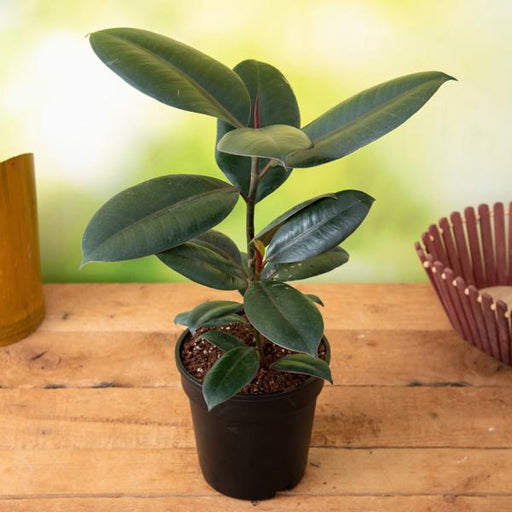 Save 17%
Save 17%
Rubber Tree, Rubber Plant, Ficus elastica The Rubber Tree, scientifically known as Ficus elastica, is a stunning indoor plant renowned for...
View full details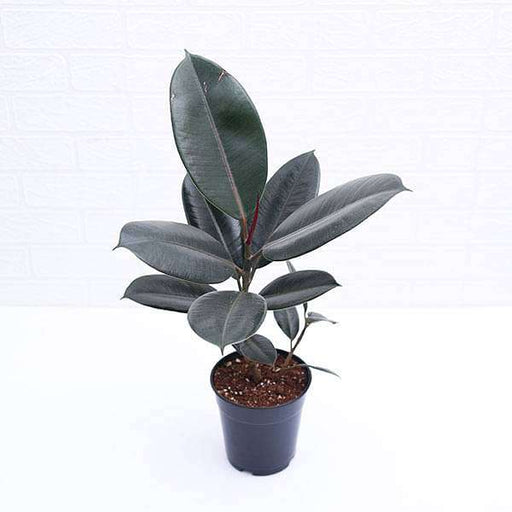
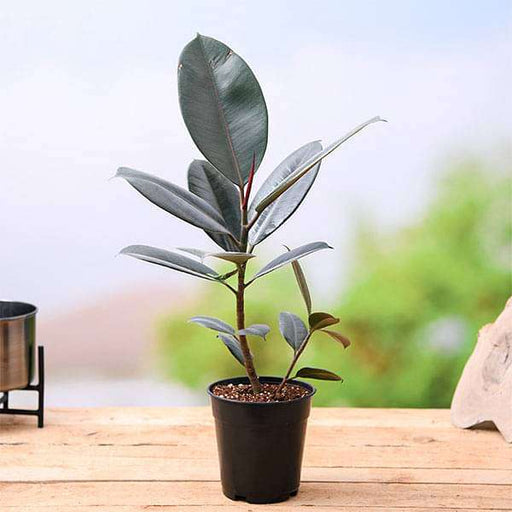 Save 23%
Save 23%
Rubber Tree, Rubber Plant, Ficus elastica (Black Prince, Burgundy) The Rubber Tree, scientifically known as Ficus elastica, is a stunning ...
View full details Save 15%
Save 15%
Pack of Vermicompost and Neem Cake for House Plants Transform your indoor garden with our premium Pack of Vermicompost and Neem Cake, spec...
View full details
Pack of Plant Growth and Flower Boosters Unlock the full potential of your garden with our Pack of Plant Growth and Flower Boosters! This ...
View full details Save 38%
Save 38%
Combo of Jeevamrut and Neem Raksha for Easy Growth and Protection of Houseplants Transform your indoor garden with our exclusive combo of ...
View full details Save 22%
Save 22%
Plant Nutrients Kit (Pack of 16) for a Healthy Garden Transform your garden into a lush paradise with our Plant Nutrients Kit, featuring 1...
View full details Save 16%
Save 16%
Combo of Top Plant Fertilizers Elevate your gardening game with our exclusive Combo of Top Plant Fertilizers, featuring two bags of premiu...
View full details Save 24%
Save 24%
Pack of 4 Additives to Make Soil Healthy and Nutrient Rich Transform your garden into a thriving ecosystem with our Pack of 4 Additives de...
View full details Save 30%
Save 30%
Transform your gardening experience with our premium Combo of Perlite and Vermiculite. This unique blend is designed to enhance soil aeration and ...
View full details Save 27%
Save 27%
Combo of 2 Vermicompost and Cocopeat - Enrich Your Soil Naturally! Transform your garden into a thriving ecosystem with our Combo of 2 Ver...
View full details
 Save 35%
Save 35%
Best 6 Plants for Perfect Indoor Garden Transform your living space into a lush oasis with our curated collection of the Best 6 Plants for a...
View full details
 Save up to 50%
Save up to 50%
Mini Succulent Garden Pack Transform your space with our Mini Succulent Garden Pack, featuring a delightful collection of 4 any variety beautiful s...
View full details
 Save 30%
Save 30%
5 Best Fragrant Plants Transform your garden or indoor space into a fragrant paradise with our curated selection of the 5 Best Fragrant Plants. Th...
View full details
 Save 24%
Save 24%
Set of 2 Bonsai Looking Grafted Adeniums Transform your indoor or outdoor space with our exquisite Set of 2 Bonsai Looking Grafted Adenium...
View full details Save 45%
Save 45%
Top 4 Die Hard Succulents Pack Transform your indoor or outdoor space with our Top 4 Die Hard Succulents Pack, featuring a curated selecti...
View full details
 Save 30%
Save 30%
5 Best Indoor Plants Pack Transform your living space into a lush oasis with our '5 Best Indoor Plants Pack.' This carefully curated collection fe...
View full details
 Save 25%
Save 25%
Set of 4 Evergreen Air Purifier Plant Pack Transform your indoor space into a lush, green oasis with our Set of 4 Evergreen Air Purifier Pla...
View full details| SrNo | Item Name |
|---|---|
| 1 | Ficus religiosa |
The Ficus religiosa, commonly known as the Sacred Fig or Peepal tree, is a revered species native to the Indian subcontinent. This deciduous tree can grow up to 30 meters tall and is known for its heart-shaped leaves that can reach up to 25 cm in length. The tree holds significant cultural and spiritual importance in various religions, particularly Buddhism and Hinduism, where it is believed to be the tree under which Buddha attained enlightenment.
What makes the Ficus religiosa special is its deep-rooted connection to spirituality and its impressive longevity, often living for over a century. Its expansive canopy provides ample shade, making it a popular choice for parks and gardens. Additionally, the tree plays a vital role in the ecosystem, supporting various wildlife species and improving air quality.
One of the most remarkable features of the Ficus religiosa is its ability to thrive in diverse environments, from urban settings to rural landscapes. Its aerial roots can create a unique visual appeal, often resembling natural sculptures. This adaptability, combined with its cultural significance, makes it a cherished addition to any landscape.
The Ficus religiosa plays a crucial role in its ecosystem by providing habitat and food for various birds and insects. Its extensive root system helps prevent soil erosion, while its large canopy contributes to improved air quality by absorbing carbon dioxide and releasing oxygen. By planting Ficus religiosa, you not only enhance your landscape but also contribute positively to the environment.
This tree isn’t just a pretty face; it’s a powerhouse of benefits! Known as the sacred fig, it’s revered in many cultures for its medicinal properties. From soothing digestive issues to acting as a natural anti-inflammatory, this tree has your back. Plus, it’s a fantastic air purifier, making your home feel like a spa retreat. Who knew a tree could be your health guru?
Caring for a Ficus religiosa is like nurturing a diva; it requires attention but rewards you with beauty. This tree loves bright, indirect sunlight and well-draining soil. Water it when the top inch of soil is dry, but don’t drown it—no one likes a soggy root! Pruning is essential to maintain its shape, so channel your inner topiary artist and get snipping!
If you’re looking for a fast-growing companion, the Ficus religiosa is your tree! With the right conditions, it can grow several feet a year, making it the overachiever of the plant world. Just be prepared for its impressive size; this tree doesn’t do small talk. It’s a statement piece that demands attention and respect!
Want to multiply your Ficus religiosa? Propagation is easier than you think! Simply take a cutting, let it callous over, and plant it in soil. With a little patience and the right conditions, you’ll have a mini forest in no time. Just remember, with great power comes great responsibility—don’t let them take over your living room!
The Ficus religiosa is not just a tree; it’s a symbol of enlightenment and wisdom. In many cultures, it represents the connection between the earthly and the divine. So, when you plant one, you’re not just adding greenery; you’re inviting a little spirituality into your life. Who wouldn’t want a wise old tree as a friend?
This tree thrives in tropical and subtropical climates, making it the ultimate sun-seeker. It loves well-drained soil and can often be found near rivers and streams, soaking up all that moisture. If you’re thinking of planting one, make sure it has plenty of space to spread its roots—this tree is not one for cramped quarters!
The leaves of the Ficus religiosa are its crowning glory—heart-shaped and glossy, they’re like nature’s own confetti. These leaves not only add aesthetic appeal but also play a crucial role in photosynthesis, helping the tree thrive. Plus, they’re a favorite among leaf enthusiasts. Who knew leaves could be so trendy?
Beyond its beauty, the Ficus religiosa has a plethora of uses. From traditional medicine to crafting, this tree is a jack-of-all-trades. Its bark can be used for making ropes, while its leaves are often used in rituals. Talk about versatility! It’s the Swiss Army knife of the plant kingdom, ready for any challenge.
Like any diva, the Ficus religiosa can attract unwanted attention from pests. Aphids, spider mites, and scale insects are just a few of the party crashers that might show up. But fear not! With a little vigilance and some natural pest control methods, you can keep your tree pest-free and fabulous.
Ever thought about turning your Ficus religiosa into a bonsai? It’s a delightful challenge! This tree’s natural growth patterns lend themselves beautifully to the art of bonsai. With careful pruning and training, you can create a miniature masterpiece that’s sure to impress. Just remember, patience is key—great things take time!
The Ficus religiosa has a rich history that dates back thousands of years. It’s often associated with the Buddha, who is said to have attained enlightenment under one of these trees. So, when you plant a Ficus religiosa, you’re not just growing a tree; you’re cultivating a piece of history. Talk about planting with purpose!
While the Ficus religiosa is a star in its own right, it has several cousins that are equally charming. From the Ficus elastica to the Ficus lyrata, each variety brings its own flair to the table. So, whether you’re a fan of big leaves or unique shapes, there’s a Ficus for everyone. It’s like a family reunion of fabulous foliage!
Ficus religiosa, also known as the sacred fig, is a tree native to the Indian subcontinent. Revered in Buddhism and Hinduism, it’s where Buddha attained enlightenment. With its heart-shaped leaves and impressive height, it’s not just a pretty face; it’s a spiritual superstar and a favorite among tree-huggers!
Caring for Ficus religiosa is like nurturing a diva. It loves bright, indirect sunlight and well-draining soil. Water it when the top inch of soil is dry, but don’t drown it! Prune occasionally to maintain its shape, and watch it thrive like the star it is in your garden.
Absolutely! Ficus religiosa can be a fabulous indoor companion. Just ensure it gets enough light and space to stretch its leafy limbs. It thrives in bright, indirect sunlight, so place it near a window. With the right care, it’ll be the talk of your living room, outshining all your other plants!
Ficus religiosa isn’t just a pretty tree; it’s a wellness guru! It purifies the air, reduces stress, and brings a touch of tranquility to your space. Plus, its leaves are used in traditional medicine. So, having one around is like having a personal therapist that doesn’t charge by the hour!
Yes, Ficus religiosa is a fast-growing tree, often reaching impressive heights in just a few years. With the right conditions, it can grow up to 3 feet annually. So, if you’re looking for a tree that won’t keep you waiting, this one’s your speedy ticket to a lush garden!
Ficus religiosa can grow quite tall, often reaching heights of 100 feet or more in the wild. In your garden, it might not reach those heights, but it can still be a majestic presence, towering over your other plants. Just remember, it’s not a tree for the faint of heart!
While Ficus religiosa is a majestic tree, it may not be the best fit for small gardens. It can grow quite large and needs space to spread its roots and branches. If you’re tight on space, consider a smaller variety or a potted version that you can keep in check!
Ficus religiosa can attract a few pesky pests, like aphids and spider mites. These little troublemakers can sap the life out of your tree if left unchecked. Regularly inspect your plant and use insecticidal soap or neem oil to keep them at bay. After all, no one likes uninvited guests!
Ficus religiosa is quite resilient and can tolerate drought conditions once established. However, it prefers consistent moisture, so don’t let it dry out completely. Think of it as a tree that enjoys a good drink but can survive a party without one. Just don’t push it too far!
Good news for pet lovers: Ficus religiosa is considered non-toxic to cats and dogs. However, it’s always wise to keep an eye on your furry friends, as they might still nibble on the leaves out of curiosity. A little supervision goes a long way in keeping both pets and plants happy!
Propagating Ficus religiosa is like playing plant matchmaker! You can do it through cuttings or air layering. Take a healthy cutting, let it callous, and then plant it in moist soil. With a little patience and care, you’ll have new trees sprouting up like eager little green friends!